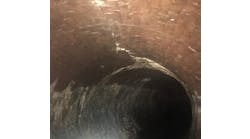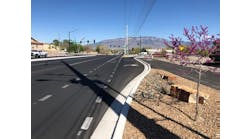The Storm Water Management Academy at the University of Central Florida is home to the latest in storm water management-related techniques. Storm Water 2004 recently found out more from the academy’s director, Dr. Martin P. Wanielista, P.E.
SW2004: When was the Storm Water Management Academy founded, and how did it come about?
Dr. Martin P. Wanielista: It was founded at the University of Central Florida on Dec. 1, 2002, and I became its first director in January 2004.
I have been working in the storm water field for 37 years, and it has been a love and interest of mine since before storm water was taken seriously as a pollutant and before it was viewed as a resource. For some time, there has been a need to conduct research on storm water as a reusable and potentially profitable resource, with a concurrent need to promote good engineering design to manage that storm water. These needs coincided with a series of Florida Department of Transportation initiatives along the same lines, and that in turn drove the development of the academy.
SW2004: What types of courses and training are offered at the academy?
Wanielista: We are dedicated to advancing the knowledge, training and protection of these waters, and we offer educational materials and research to advance the understanding and practice of good storm water management. The academy leadership has as one focus working with industry and the public about the value of reusing managed storm water. The solution to storm water pollution, flood control and resource use needs to have the continuing support of industry leaders. The contributions from practicing professionals are appreciated.
In addition to conducting research and funding partnerships for research, we are developing a work force through the mentoring and employment of students. We also provide access to publications and information, and we are making lifelong learning opportunities available to the existing work force.
To encourage lifelong learning, we offer all of our graduate courses on video streaming, and they are available in 151 locations. Several locations are worldwide, with students taking classes in Saudi Arabia, Iceland and China.
SW2004: What are some examples of good storm water management?
Wanielista: In Florida, about 50% of our potable water is used for irrigation, which is very wasteful and expensive. Using managed storm water can reduce the use of potable water and save money. It can also keep our lakes and rivers cleaner. Storm water runoff stored in a surface pond or in an aquifer and then used for irrigation can reduce potable water use and reduce the amount of pollutant loading to other bodies of water.
That’s because pollutants in storm water are either dissolved in solution or in particulate form. Temporarily storing storm water removes some of the particulates, and additional pollutants can be removed by filtration or vegetative uptake. When stored waters are evaporated or irrigated from the pond, additional pollutants are prevented from discharging on the surface, resulting in less flow from the pond and less pollutant mass in the environment.
Another example of good storm water management is the Green Roofs program, which has a variety of benefits in urban settings and is becoming fairly common in Germany and the Netherlands. Green Roofs are, quite literally, plants on rooftops, generally in cities and generally in large office buildings. They reduce energy demand, protect against temperature extremes and provide a storm water collection system. In Detroit, there is a Ford Motor Co., building that has converted to a Green Roof and Chicago’s Mayor Richard Daley is looking to make them a requirement on civic buildings. Another example is using automated cisterns attached to buildings to collect storm water and stop runoff on impervious surfaces, and here at the academy we keep promoting irrigating from shallow aquifers, which is one of my favorite subjects.
For more information on the Stormwater Management Academy visit http://stormwater.ucf.edu/.


